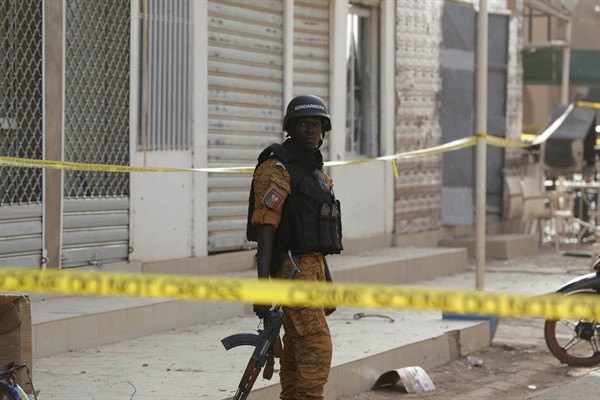OUAGADOUGOU, Burkina Faso—The images that circulated on social media following last month’s bloody attack on the village of Solhan, in northeastern Burkina Faso, weren’t as gory as those that are often shared online after towns have been hit by armed groups. But even in a country where such killings are a near-daily occurrence, there was something about the photographs—showing dozens of bodies wrapped in woven prayer mats and piled into a mass grave—that jolted many people to take to the streets.
“It was horrible, but it showed us the limits of our state and the current regime in finding solutions to the insecurity problem,” Salif Kabore, a sociology student who participated in an opposition-sponsored protest rally over the weekend here in the capital, told me. “We have lived with this for more than five years.”
No group has claimed responsibility for the June 5 attack on Solhan—a village populated mainly by artisanal gold miners—which killed at least 132 people, according to the government. Some local sources claimed the death toll was as high as 200. Jama’at Nasr al-Islam wal Muslimin, an affiliate of al-Qaida in the Islamic Maghreb, condemned the massacre and denied responsibility in a statement shared on Twitter by MENASTREAM, a research consultancy group focused on the Sahel and North Africa.*

